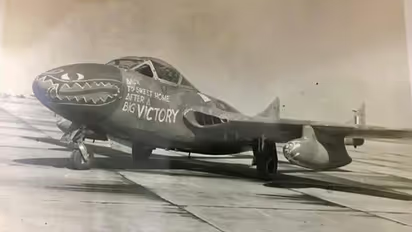From the IAF Vault: Story of four ad-hoc combat squadrons of Indian Air Force
Published : Sep 18, 2023, 06:44 PM IST
Sixteen Vir Chakras, three Vayu Sena Medals,one Vishisht Seva Medal and five Mention-in-Dispatches -- these are the earnings of four ad-hoc IAF combat squadrona. IAF historian Anchit Gupta traces the history of the 120,121,122 and 123 squadrons that were manned by aircraft and instructors from training establishments
Stay updated with the Breaking News Today and Latest News from across India and around the world. Get real-time updates, in-depth analysis, and comprehensive coverage of India News, World News, Indian Defence News, Kerala News, and Karnataka News. From politics to current affairs, follow every major story as it unfolds. Download the Asianet News Official App to stay informed anytime, anywhere.
Read more Photos on
